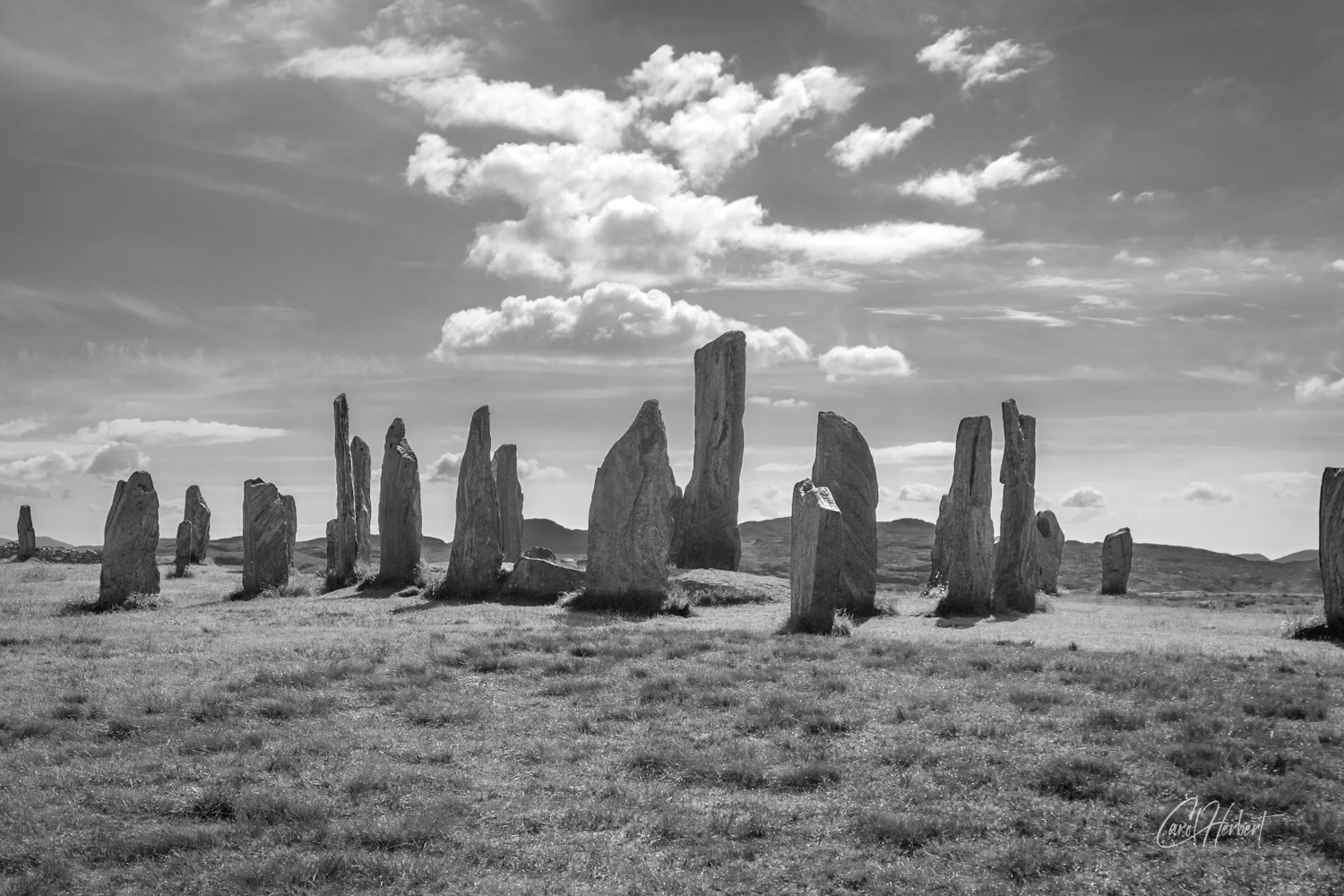




Bring stunning photography into your space with this high-quality 12" x 8" Historic Callanish Standing Stones art print, designed for exceptional detail and longevity.
Printed on lustre photographic paper, it features a semi-matt finish with a subtle, speckled sheen that minimizes glare - ideal for bright rooms or spaces with direct lighting.
Includes a 1/4-inch white border for a refined, ready-to-frame presentation.
Situated on the West Coast of Lewis in the Outer Hebrides above Loch Roag. Known in Gaelic as the Calanais Standing Stones , the Calanais Standing Stones were erected in a cruciform pattern with a central stone circle in the late Neolithic era. There are many other monuments and stone circles in the area implying that Callanish was an active focus for prehistoric religious activity for at least 1500 years.
According to one tradition, the Callanish Stones were petrified giants who would not convert to Christianity, and another is that early on midsummer morning an entity known as the "Shining One" walks the length of the avenue, his coming heralded by the call of the cuckoo.
Bring stunning photography into your space with this high-quality art print, designed for exceptional detail and longevity. Choose from three premium paper finishes to suit your lighting and display needs:
Each Historic Callanish Standing Stones art print includes a 1/4-inch white border by default, providing a refined, ready-to-frame presentation. Need a custom border size? I offer tailored options upon request to match your specific framing or display preferences.
| Available Sizes | A4, 12" x 8", 18" x 12", 24" x 16" |
| Paper Finishes | 230 μm Fujifilm Crystal Archive DPII Lustre 240 μm Fujifilm Crystal Archive DPII Gloss 308gsm Hahnemühle Photo Rag |
| Printing Method | Digital Laser / 12 colour UltraChrome Pro inkset |
| Care Instructions | Handle with Clean, Dry Hands - Oils and dirt from your fingers can damage the surface. Cleaning: Lustre: Dust Gently with a Soft Cloth - A clean, dry microfibre cloth can remove dust without scratching the surface. |
| Eco Credentials | Printed on demand to prevent wastage. |
Historic Callanish Standing Stones Photographic wall art prints are printed to order and usually shipped within 1-2 business days. Please allow a further 2-3 days from the despatch date to receive your item (not including weekends or bank holidays).
Prices shown are inclusive of delivery to Mainland UK. Shipping to other available areas calculated at checkout.
Please check out the Delivery & Returns and Free Shipping pages for futher information.There are no reviews for this item yet, but here is just a small selection of what other happy Real World Art customers have to say!
Brilliant experience and service, we have the Highland Cow framed print, my other half being a lover of cattle and cows and it looks incredible on our picture wall 🐂 Thanks Again!!
Today I had the pleasure of picking up a framed and mounted print of ‘Dandelion Clock’ its absolutely stunning. The clarity is just crazy!! Now to decide where to put it!! Really beautiful work.
Wonderful card that was delivered quickly and exceptional service. Will definitely buy more in the future.
Thank you so very much the mugs are really lovely and you have kept me informed how my order was doing right up to the delivery, your service is 1st class and I will be doing business with you again.
Loved this image of our wedding day and was appropriate for our anniversary too...
Brilliant customer service from the start with an easy website to navigate. Unfortunately when my order arrived the print was damaged, contacted Carol who sent another out for me straight away and kept me updated along the way. Absolutely fantastic service. Thank you